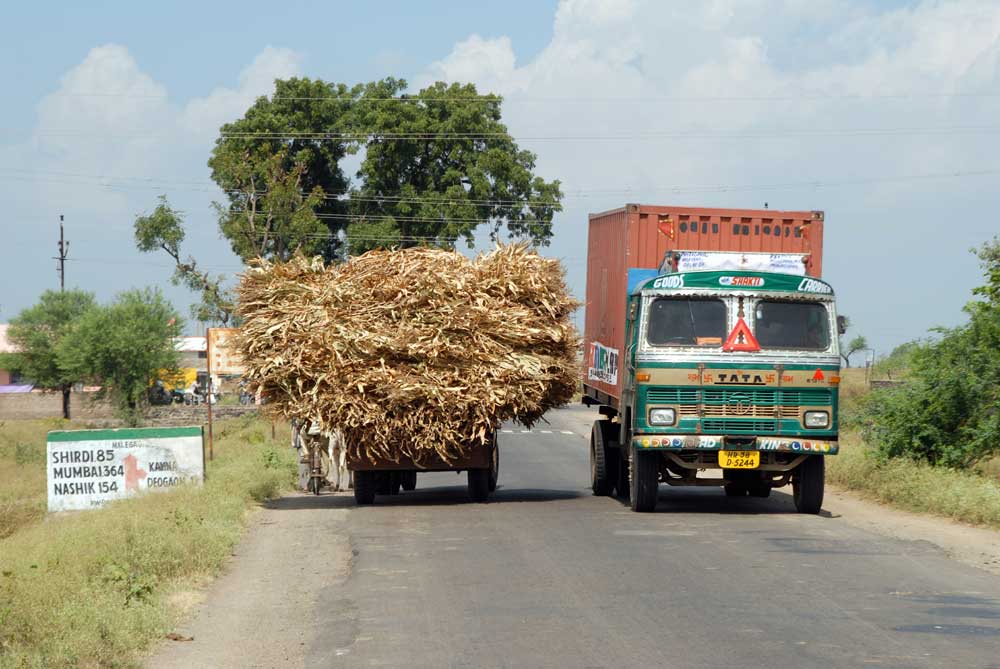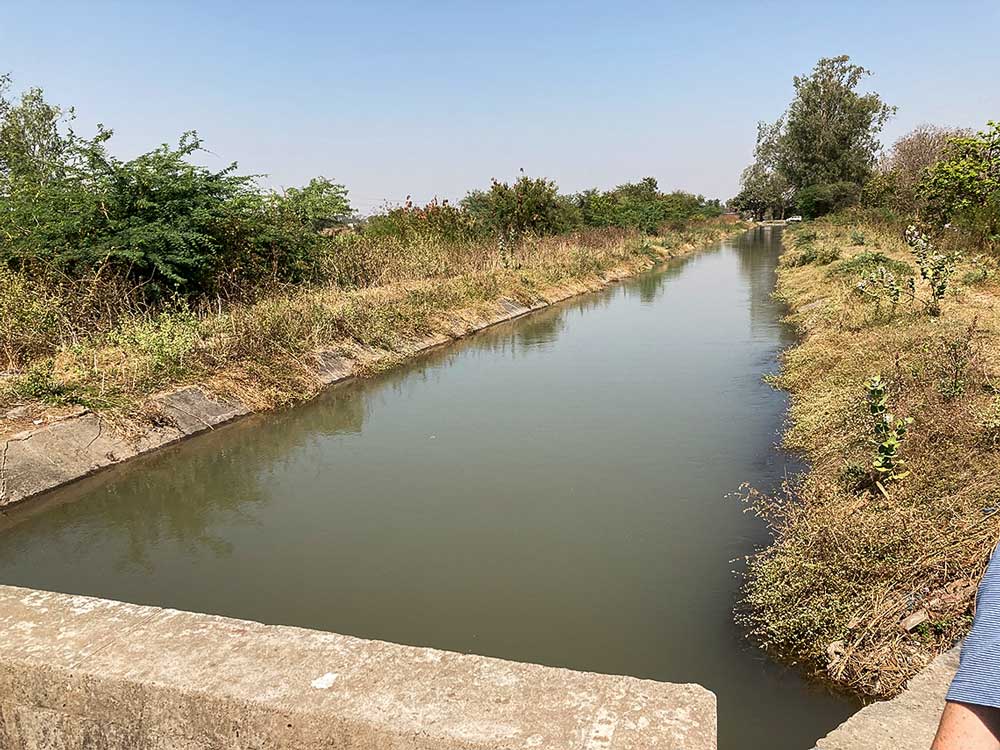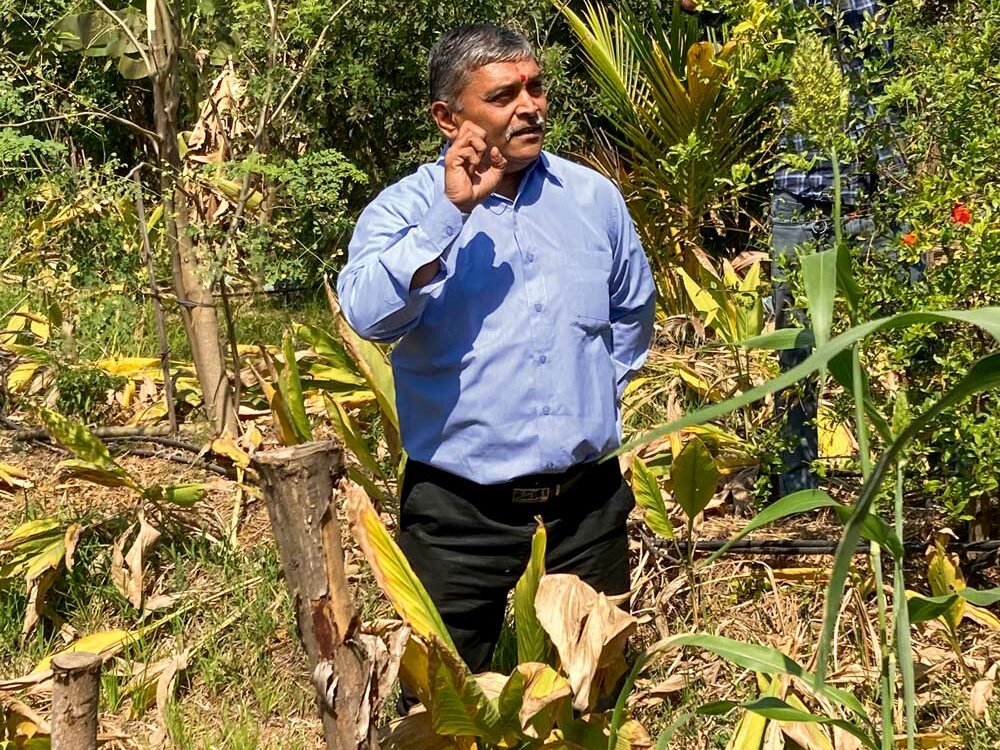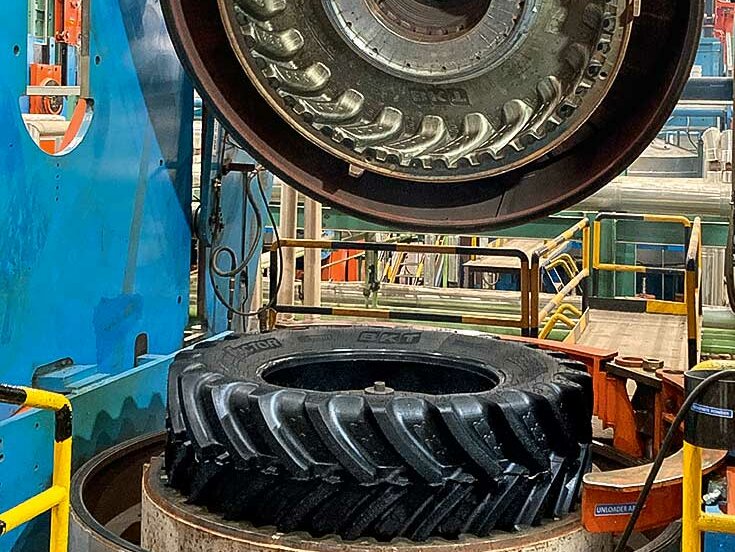India: Supersized challenges
By Thomas Preusse, DLG Mitteilungen
At the end of 2023, India will be the most populous country in the world. In January, statistics showed a population of 1.41 billion, compared with 1.45 billion in China. Its economic growth, at 5.7% recently, is also higher than that of its eternal rival and one of the highest in the world. What fundamentally distinguishes the two countries: A quarter of Indians are younger than 25. The birth rate is twice as high as in China.
The economic pressure on the rural population is increasing. Despite all the rural exodus: 70 % of all Indians are directly or indirectly dependent on agriculture. 43 % of all workers are employed there, but they contribute only just under 17 % to the gross national product. A development historically known from German real division areas has also taken place in India: Farms have become smaller and smaller. Whereas in 1970 the average farmer still farmed 2 hectares, today it is only 1 hectare. 87 % of the farms have less than 2 ha at their disposal, but together this accounts for less than half of the LN.
Subsidies
As recently as the 1960s, India imported three-quarters of the grain it needed. Today, oilseeds and pulses are the main imported products. Self-sufficiency is deeply inscribed in the "genetics" of India's agricultural policy. The way forward for many farmers is still that of the Green Revolution - that means irrigation water, mineral fertilizers, chemical crop protection. Because both fertilizer and irrigation are heavily subsidized, "a lot helps a lot" still dominates the thinking. In addition, the state, guided by the specter of hunger, has subsidized primarily staple foods for decades. Over 30 years, agricultural production grew by 3 % annually, but the population grew by only 1.6 %. This means that surpluses are created in many years. They are exported, partly to maintain the local price level. Because hunger is mostly a question of purchasing power and not quantity, India nevertheless remains the country with the most undernourished people in the world. Whereby attention is increasingly moving away from pure calories to vitamins and minerals.
Water Availability
For all its statistical dominance, India is experiencing rapid urbanization. Estimates expect 600 million people to live in cities by 2030. This means demand for value-added products is growing. Given "antediluvian" land laws, these are also an opportunity for individual farmers to increase their incomes.
At the same time, the environment and climate are signaling that it is no longer easy to continue on the path of the Green Revolution, which has been successful for so long. Southeast Asia is the region that is already among the hardest hit by climate change. Large parts of the country are overused and depleted. One-third of arable land is considered degraded. Access to water is becoming increasingly critical. Agriculture consumes 90 % of it, and - because provision and energy cost almost nothing - very inefficiently. In India's breadbasket, Punjab in the north, the water table has dropped dramatically. Nitrous oxide from wet rice is being targeted by climate protectionists, as are methane emissions from the "sacred" cows.
Environmental protection
The challenges have been known for years. However, India is not China, where the state can crack down at will. It is a democracy (increasingly "managed" since 2014) with a legendarily sprawling bureaucracy. That's why the step from awareness to action is occasionally a big one. Ashok Gulati, a well-known agricultural economist in New Delhi, identifies three "I's" facing India's agriculture: Innovation (from climate resilience to food ingredients), Incentives (subsidy system, water and energy conservation), and Institution (soil mobility, water extraction). As in Europe 30 years ago, there have long been proposals in India to replace production subsidies with direct income support. Three 2020 farm laws intended to give more space to private initiative over state guarantees were repealed the following year after angry protests. Interestingly, it was not so much the poorest of the poor who took to the barricades, but many relatively wealthy farmers who had benefited more than average from the "old" system. Problem recognized, problem solved? That doesn't work in Europe, after all.
In view of the very different conditions, there can be no such thing as "the" solution. Issues of climate and environment, production and socio-economic conditions cannot be addressed in isolation. For example, intensive production may still be viable for some farmers. This has been demonstrated, for example, in the case of genetically modified cotton. For a small farmer, however, it can be literally fatal if a crop failure (more likely in times of climate change) means that the farm loan cannot be serviced. Suicide rates among Indian farmers have always been alarmingly high.
Natural farming: A radical alternative?
In some Indian states (Andhra Pradesh, Gujarat), an idea is gaining ground that, at first glance, looks like the proverbial egg-laying willow: zero budget natural farming. Production-wise a kind of regenerative agriculture with all the hot air buzzwords going around in this context ("productively resilient"), it could be an answer to one of India's serious problems: rural poverty and the associated rural exodus. The idea is to enable both self-sufficiency without external input via a variety of cultivated fruits on a small area and to sell higher-value products alongside. In terms of production technology, the system is based on
- a year-round ground cover with living plants and mulch,
- a variety of different fruits (15 - 20 and more) from legumes as nitrogen collectors to vegetables, bananas and trees,
- an extensive renunciation of soil cultivation,
- the integration of animals into a circular economy,
- biostimulants, plant extracts and compost tea instead of "chemicals."
Everything seems extremely labor-intensive - but the people are there, unlike capital and soil. In return, it should save water and energy. Crop residues are not burned, as is usually the case. And the need for subsidies is lower.
Open questions
At a 2-ha research station near Surat in the state of Gujarat, Dr. Janksinh Rathod demonstrated the natural farming system to us. There, five different "layers" of crops are established on 50-cm-high embankments about 3 m apart. This also allows the passage of a small tractor. This is because the decisive factor is the regular application of compost tea, which is obtained from plant residues and cow dung. At least the "father" of this system (Subhash Palekar) gives it a spiritual dimension (the "holy mother soil"). The fact that Palekar at the same time denigrates organic farming because it was (co-)invented in India, but its inventor Albert Howard was British and his concept was therefore "un-Indian", fits in with the increasing Hindu nationalism. Nevertheless, new technology is not abandoned. The dams, for example, are interspersed with drip irrigation. How a small farmer can afford such an investment is another question.
High-tech for small farmers
This question was raised all the more during a presentation by Dr. CR Mehta from the Research Institute for Agricultural Mechanization at a press event held by the BKT company in Mumbai. Mehta focuses on mechanization of smallholders, only a small proportion of whom are motorized at all, i.e. have a tractor. India is primarily tractorized, not mechanized in terms of actual work completion. Purely in terms of volume, it is the world's largest tractor market, with more than 1 million units. Only 10% of these are exported. Every second tractor sold in India has between 42 and 50 hp.
A mechanization level of 40 - 45 % of farms on average is low, even compared to China (57 %). If forecasts are followed, it will have to grow: The share of agricultural labor will decrease from today's 43 % to only 26 % in 2047. In view of the farm structures, the organization of inter-farm work is a prerequisite for productive work completion. Versatile, "smart" machinery for smallholders is needed. Mechanization levels vary widely by crop and operation, from an average of 69% for wheat to 35% for sugarcane. Even before production cost reduction, Mehta sees the need to counteract the daily overwork of many farmers (and especially women).
Where tractors drive, tires are not far away
While a broad-based company like Mahindra & Mahindra may be exhibiting at Agritechnica, sales of Indian agricultural machinery in Germany and Western Europe are as hard to find as the proverbial needle in a haystack. At best, small tractors have a market in southeastern Europe, where they compete against machines from China. Otherwise, if you find Indian products in the agricultural machinery sector in Europe, they are mostly tires. This is due to the company BKT, which specializes in "offroad". Founded in 1987, the family-owned company now employs 10,000 people at its five Indian sites and recently achieved annual sales of US$1 billion. The ambitious growth in production is to take place primarily at the Bhuj site in the northwest of the country. The site was not built on a greenfield site in 2012, but in the middle of the desert. It began with 123 hectares of factory space, and by the end of 2023 it will be 323 hectares. An integral part of the plant is its own carbon black factory, which also supplies external customers. Carbon black obtained from crude oil colors tires black, among other things. The BKT managers around owner and CEO Arvind Poddar are hoping for impetus not only from the domestic market, but also from exports. Represented in Europe with a site in Italy, the most important markets are Germany and France. New belt drives introduced this year for tractors and, from May 2023, also for combine harvesters are to provide additional assistance.
Conclusion
There are hardly any countries in the world that can be reduced to a common denominator as India. One finds outrageous wealth and abject poverty, self-sufficiency and high-tech agriculture, green revolution and alternative concepts right next to each other. And all this against the backdrop of climate change and population growth, both of which affect India much more than other regions.
There is no such thing as "the" Indian agriculture; India is a country that continues to fall short of its potential in the international agricultural world. What can change quickly, however. Perhaps a medium-sized tire manufacturer like BKT cannot be extrapolated to the entire country. But the Indians have what it takes to do more. Despite their own endless troubles, we should not underestimate them.







